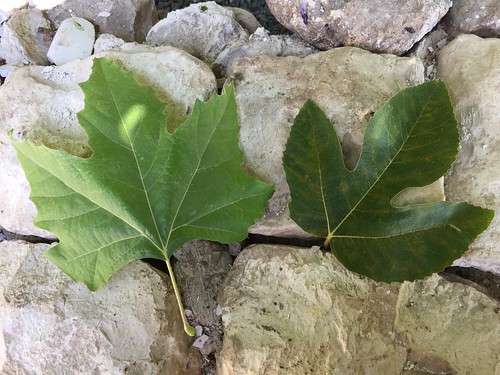Fig Incense

With all the heat waves I've survived in the past couple of years, my Philosykos is beginning to dwindle down. So, I have decided to seek out a new fig fragrance. I love Philosykos, a green fig fragrance that is very refreshing in hot weather. Like wading in a cool pebbled stream, and enjoying the shade of fig trees and towering oleander bushes. It lasts very briefly, and so I thought why not get a stronger fig scent?
Premier Figuier was created in 1994, and was not only the first fig fragrance, but also one of the first by Olivia Giacobetti (the year prior to that she debuted her career with Petit Guerlain and Eau de l'Artisan). I have a sample of this first fig, and always liked it but not enough to purchase a bottle: it's milky, coconut and powdery and lasts even less than Philosykos (which is also by Giacobetti, and very light, which is excellent quality for summertime, but also limits it to this season for me). The latter has an Eau de Parfum version that is wonderful and longer lasting, but simply not available around this part of the world; and so when I stumbled upon Premier Figuier Extrême in the website of the nearest perfume boutique, I decided to purchase it unsniffed (the actual location near me didn't have it, so that's why I didn't smell it first). When it arrived, I immediately had a buyer's regret, because I should have known better than to purchase something with a similar name to something I like and expect it to end up well. I decided to pick up the scent, not open it, and go to the boutique that is a little more far away and sniff them side by side.
But, of course, I couldn't not open a bottle of new perfume sitting on my desk. So I undressed the box from its cellophane wrap, released the bottle from its carton embrace and spritzed just teeny tiny bit on one wrist. Well, this is neither smelling like Premier Figuier; not like fig of any shape for that matter. Instead, I got this exotic whiff of the spice market, a swirl of incense and maybe some crushed fig leaves very far in the backdrop. To replace Philosykos clearly it can't. Nevertheless, I was intrigued.

PFE is rather expansive, surprisingly full-bodied and with a sultry, sulphuric air to it, and I am wondering if this is part of the allusion to the fig fruit. This makes me wonder if the asafoetida note is not wrongly listed and actually belongs to the Extrême. It is mentioned this way on Fragrantica.
It is not so much like ripe figs (and definitely not purple!) as stated in some of the copy writing, but more of a conceptual perfume, an interpretation of an interpretation. I imagine the perfumer revisiting her creation almost a decade later to tweak and upgrade the formulation to make it longer lasting - and gets carried away creating a completely new (and improved!) interpretation of the fig theme. This time the fruit is ripe, rich, full and the tree it grows from has matured to have thick, huggable trunk and more sturdy branches. It has become a home to several song birds and gives enough shade to rest under and cool off, even though it's not even close to any body of water. On the contrary: Maybe someone is burning a fire near it, and roasting some summer fruit on its flames.
There is the aspect of contrasting textures, also, which is what I find most intriguing about this scent. There is the feeling of being surrounded by fine incense smoke, and at the same time a bracing touch of bumpy fresh fig leaf. A delicate, powdery, almost honeyed sweet floral haze and also the pulling apart of fruit to reveal its minuscule slimy tentacles inside. The polished dusty feel of a silvery fig tree trunk, and at the same time the oozing white milky watery sap.
All in all, I'm pleased to say this has turned into an intriguing blind purchase which I'm happy to embrace into my collection and wear in this strange late spring, which keeps jumping from one extreme to the next: thunderstorms and humid cold rainy days, followed by hot dry desert winds, and replaced again by muggy humid days and more showers sprinkled in between. It's light-textured yet rich with nuances and I'm happy to discover different things within it in both cooler and warmer days.






